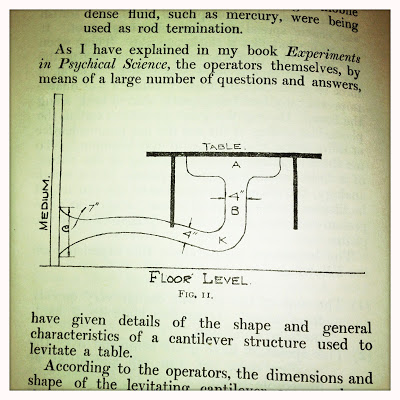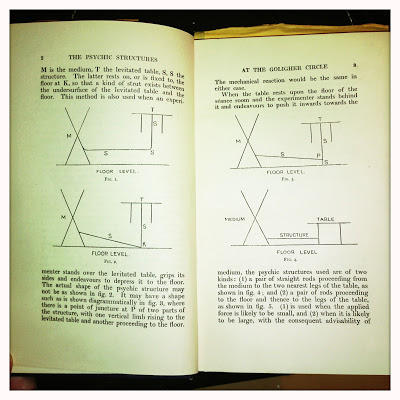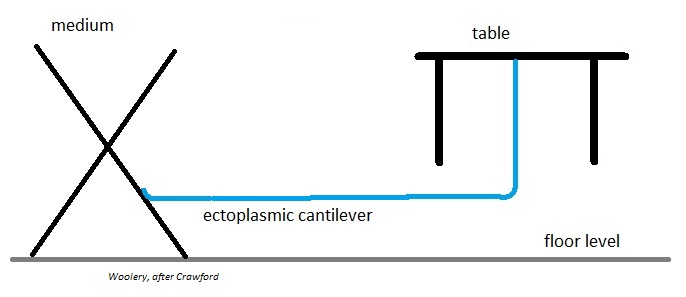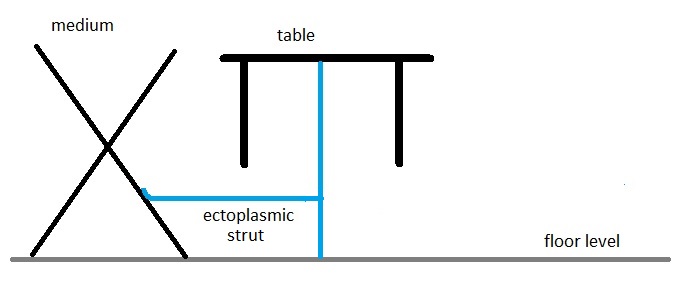Table Lifting via Ectoplasmic Cantilevers
I think Crawford's own words best describe the difficult situation of investigating manifestations in the séance room.
“The greatest trouble experienced by the
experimenter in tracing the outlines of these psychic
structures at the Goligher circle lies in the fact that
they are generally quite invisible under the ordinary
conditions of the seance room.”
Crawford,
p. 9
And, once the table was aloft:
“The table remained levitated for several
minutes, and I shifted my position into various parts of
the circle, looking at the space below the table from
different angles. But to all appearance the space was
empty: that is, no part of the levitating structure
reflected, refracted, or absorbed the light. … There was
nothing visible to me or to anyone else in the room
below or round the levitated table.”
Crawford, p. 9
Difficult
indeed is the lot of an ectoplasm investigator!
Crawford
shares with his readers several different ideas for how the
structures would function.

The rest of
his diagrams are a bit more simplified. Of
special interest to me is the difference in representation
100 years ago, compared to the way free body diagrams are
drawn today.

For clarity, I have redrawn the relevant figures for this discussion. The first is a true cantilever, in that one end connects to the medium, the other to the table.

The second is meant to provide the needed support for lifting a heavier table.

Third is an alternative version of the heavier-lifting strut, which Crawford claims delivers the same mechanical advantage as the previous design.

Frankly, I
have looked at these designs several times and tried to figure
out where the force would be applied in order to actually lift
the table, as opposed to assuming the upright arm just extends
like a piston. If these structures are anything like what I
think they are, Mr. Crawford should have failed his Engineering
Statics and Dynamics courses. And he certainly should not
have been (I'm not kidding, here) teaching Mechanical
Engineering!